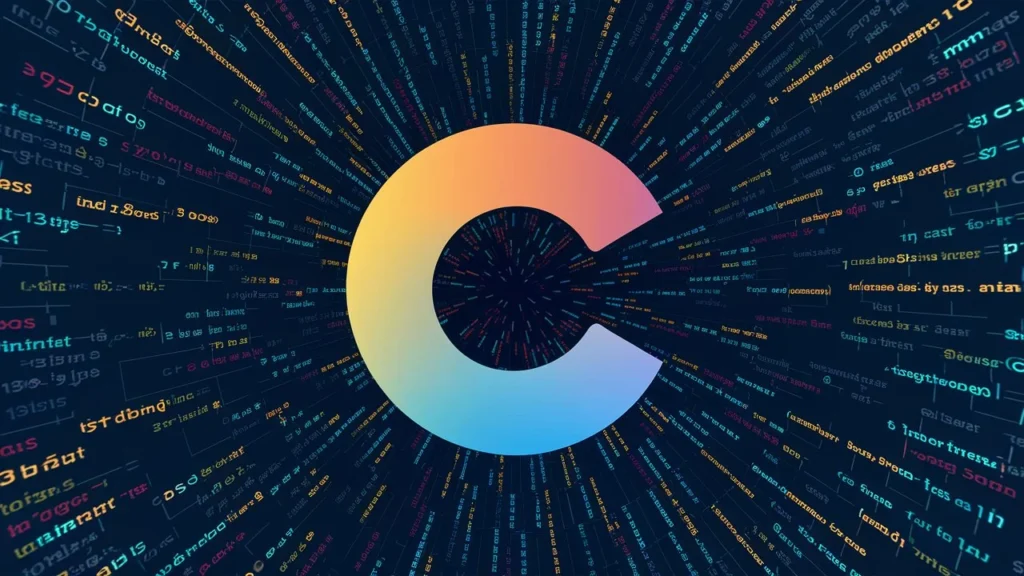C, a foundational programming language, empowers you to build robust and efficient software applications. Understanding arrays and pointers, two fundamental concepts in C, is crucial for mastering data manipulation and memory management. Arrays and pointers in C, equips you with the knowledge to navigate complex data structures with confidence.
Arrays: Organized Data Storage in C
An array in C is a structured collection of elements of the same data type, stored in contiguous memory locations. Imagine a row of identical boxes where each box holds a specific value. Arrays offer an efficient way to manage multiple related data items.
Here’s a breakdown of key array concepts:
Declaration:
Arrays are declared using the following syntax:
C
data_type array_name[size];
- data_type: Specifies the type of data the array can hold (e.g., int, float, char).
- array_name: A unique identifier used to reference the array.
- size: An integer value indicating the number of elements the array can store.
For example, the following code declares an array named numbers that can hold 10 integer values:
Code
int numbers[10];
Initialization:
Arrays can be initialized during declaration or later in the code. Each element can be assigned a specific value:
Code
int numbers[10] = {10, 20, 30, 40, 50, 60, 70, 80, 90, 100};
Accessing Elements:
Individual elements within an array are accessed using the array name followed by the index enclosed in square brackets. The index starts from 0, meaning numbers[0] refers to the first element, numbers[1] refers to the second element, and so on.
Code
printf(“The third element in the array is: %d\n”, numbers[2]); // Output: The third element in the array is: 30
Pointers: Power of Memory Addresses
A pointer in C is a variable that stores the memory address of another variable. It acts like a signpost pointing to a specific location in memory where data resides. Imagine a label attached to a box, directing you to its exact location within a larger storage unit.
Here’s a breakdown of key pointer concepts:
- Declaration: Pointers are declared using the following syntax:
C Program
data_type *pointer_name;
- data_type: Specifies the type of data the pointer can point to (e.g., int*, float*, char*).
- pointer_name: A unique identifier used to reference the pointer variable.
- *: The asterisk symbol indicates that the variable is a pointer.
For example, the following code declares a pointer named ptr that can point to integer variables:
Code
int *ptr;
- Initialization: Pointers can be initialized to point to a specific memory location using the address-of operator (&). This operator retrieves the memory address of a variable.
Code
int num = 10;
int *ptr = # // ptr now points to the memory address of the variable num
- Dereferencing: To access the data stored at the memory location pointed to by a pointer, we use the dereference operator (*). The dereference operator essentially follows the pointer’s signpost and retrieves the value at that location.
Code
printf(“The value pointed to by ptr is: %d\n”, *ptr); // Output: The value pointed to by ptr is: 10
The Intricate Relationship Between Arrays and Pointers
In C, there’s a fascinating connection between arrays and pointers. The name of an array actually decays to a constant pointer to the first element of the array. Let’s break this down:
Code
int numbers[5] = {1, 2, 3, 4, 5};
// Here, “numbers” is the name of the array.
// It also implicitly decays to a pointer to the first element (numbers[0]).
int *ptr = numbers; // This is equivalent to ptr = &numbers[0];
printf(“The value pointed to by ptr is: %d\n”, *ptr); // Output: The value pointed to by ptr is: 1
This relationship allows you to use pointers to manipulate arrays efficiently. You can iterate through an array using pointer arithmetic:
Code
for (int i = 0; i < 5; i++) {
printf(“Element %d: %d\n”, i, numbers[i]);} // Accessing elements using array notation
for (int *ptr = numbers; ptr < numbers + 5; ptr++) {
printf(“Element: %d\n”, *ptr);} // Accessing elements using pointer arithmetic
In the second loop, the pointer ptr is initially assigned the address of the first element (numbers). The loop condition checks if ptr has reached the end of the array (numbers + 5). With each iteration, ptr is automatically incremented to point to the next element in memory due to pointer arithmetic.
Advanced Pointer Concepts: New Horizons
C equips you with powerful pointer techniques for complex data manipulation:
- Pointer to Pointer: A pointer can point to another pointer, creating a layered structure. This is often used for building dynamic data structures like linked lists and trees.
Code
int num = 10;
int *ptr1 = #
int **ptr2 = &ptr1; // ptr2 is a pointer to a pointer, pointing to the memory address of ptr1
printf(“The value pointed to by the pointer pointed to by ptr2 is: %d\n”, **ptr2); // Output: The value pointed to by the pointer pointed to by ptr2 is: 10
- Array of Pointers: An array can store multiple pointers, each pointing to different memory locations. This is useful for managing collections of data structures.
Code
int numbers[3] = {10, 20, 30};
int *ptrs[3]; // Array of pointers to integers
for (int i = 0; i < 3; i++) {
ptrs[i] = &numbers[i]; // Assigning the addresses of each element in the numbers array to the pointers in the ptrs array
}
printf(“Value pointed to by the first pointer in ptrs: %d\n”, *ptrs[0]); // Output: Value pointed to by the first pointer in ptrs: 10
- Function Pointers: Pointers can point to functions, allowing you to pass functions as arguments to other functions. This enables powerful techniques like function callbacks.
Code
void print_number(int num) {
printf(“The number is: %d\n”, num);
}
void call_function(void (*fptr)(int)) {
fptr(5); // Calling the function pointed to by fptr
}
int main() {
call_function(print_number); // Passing the print_number function as an argument
return 0;}
Cautions and Best Practices for Working with Arrays and Pointers
- Out-of-Bounds Access: Accessing elements beyond the array’s size can lead to program crashes. Use proper bounds checking with loops or pointer arithmetic.
- Memory Leaks: If you allocate memory dynamically using pointers and forget to deallocate it, you can create memory leaks. Ensure proper memory management using malloc and free.
- Dangling Pointers: A pointer might become dangling if it points to memory that has been freed. This can lead to undefined behavior. Be mindful of pointer assignments and memory deallocation.
Conclusion: Mastering the Building Blocks for Powerful C Programming
Arrays and pointers are fundamental concepts in C, empowering you to create efficient and versatile data structures. By understanding their declaration, initialization, manipulation techniques, and the intricate relationship between them, you can unlock new possibilities for data manipulation and complex programming tasks. Remember to exercise caution and follow best practices to avoid common pitfalls.
With a solid grasp of arrays and pointers, you’ll be well-equipped to navigate the world of C programming with confidence and tackle more advanced concepts with ease.


